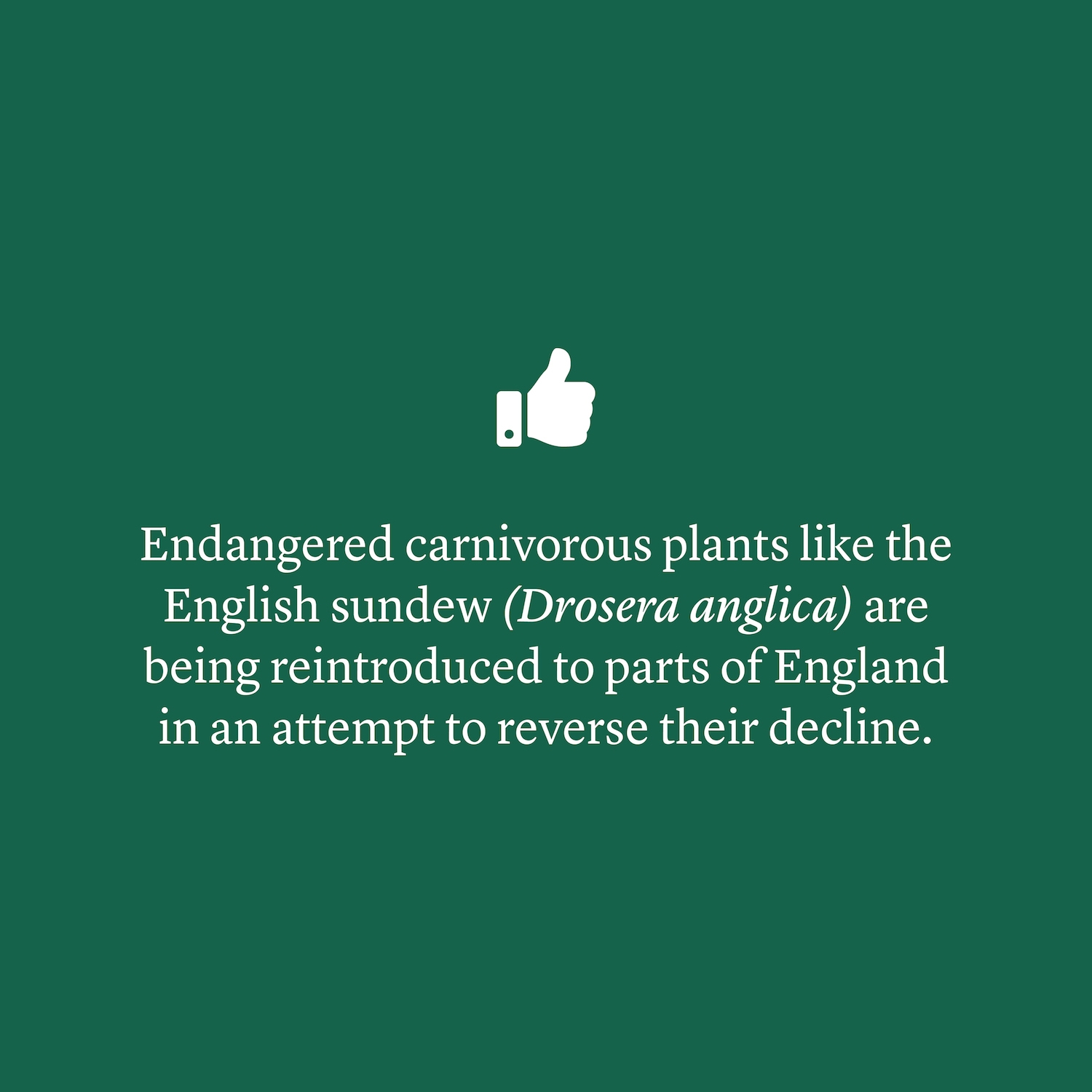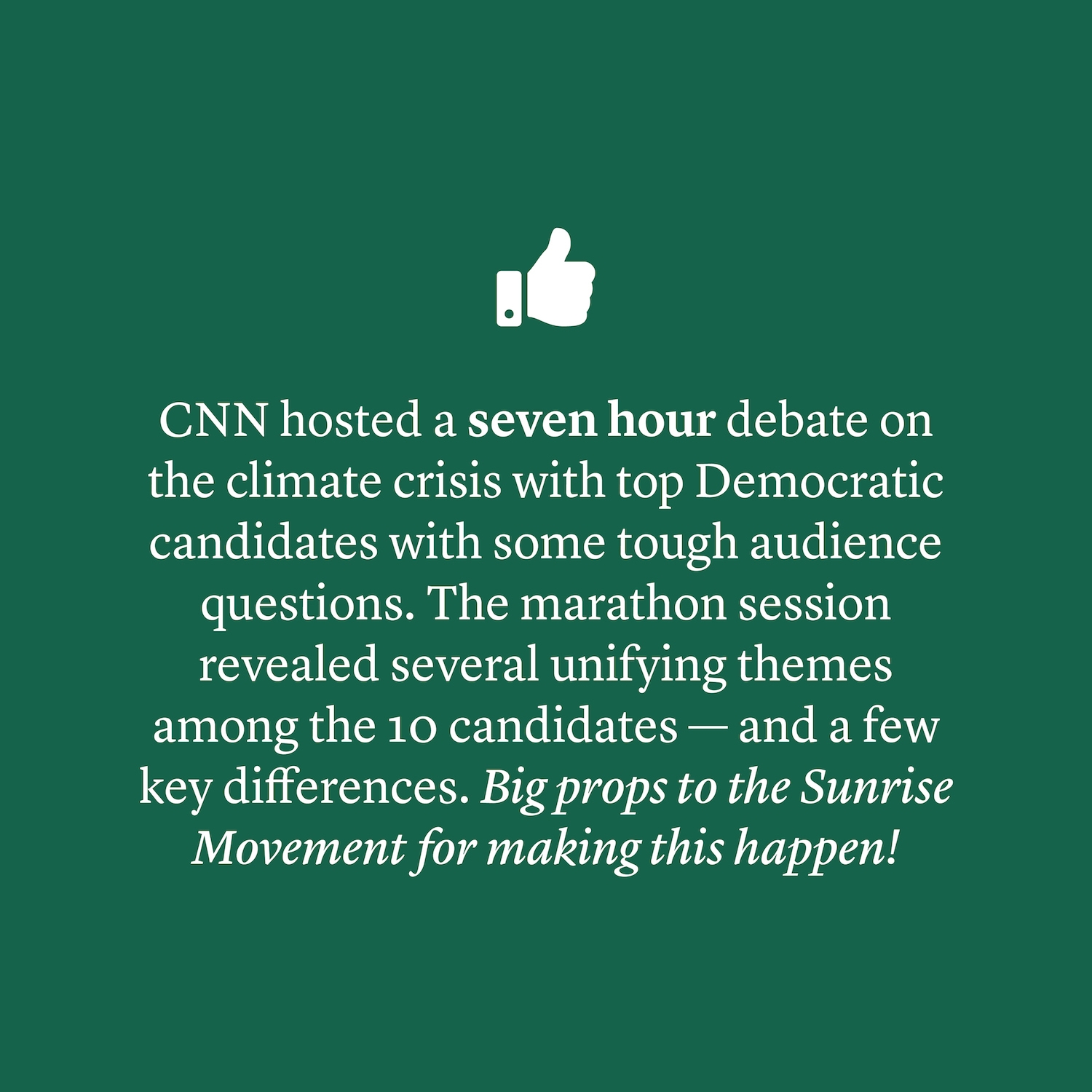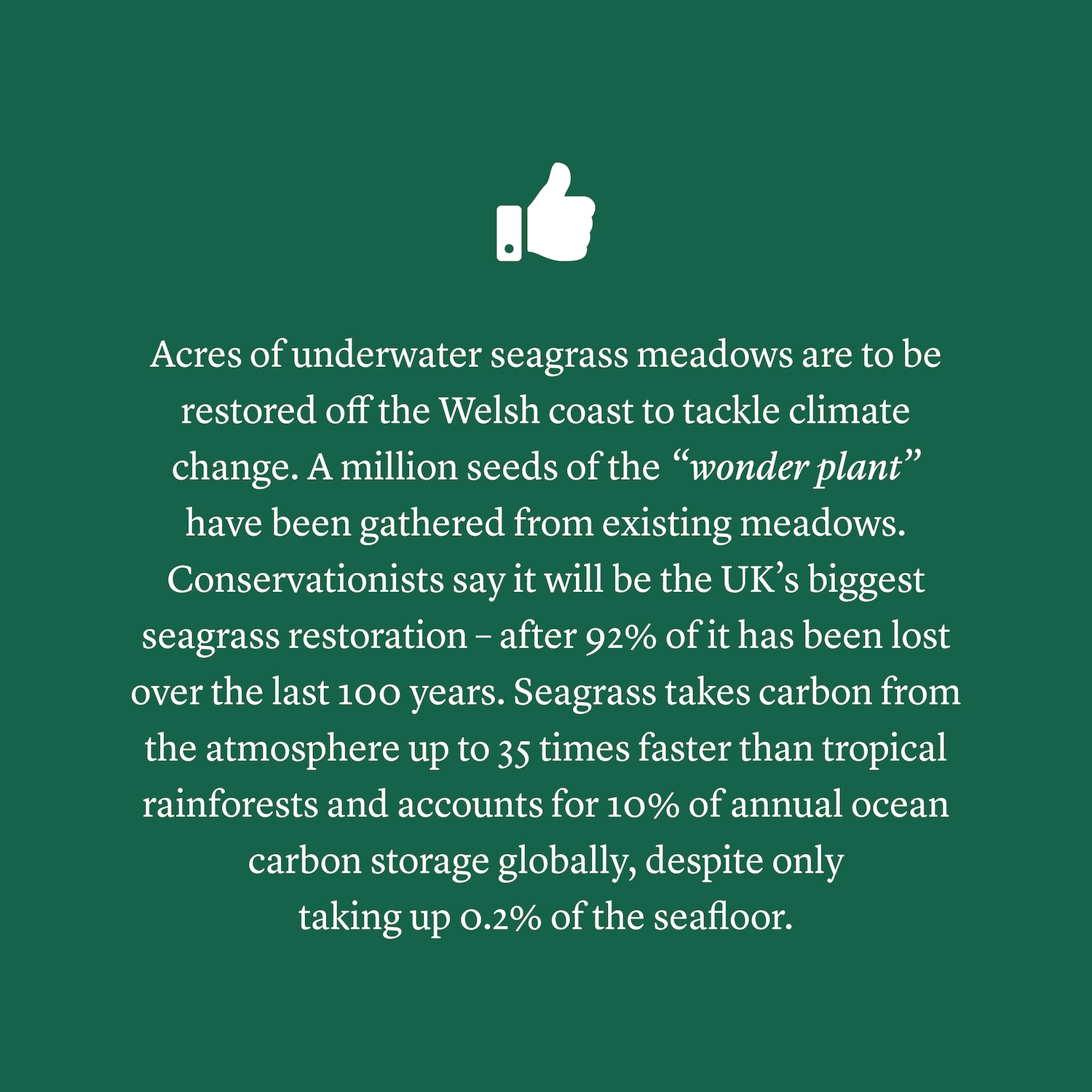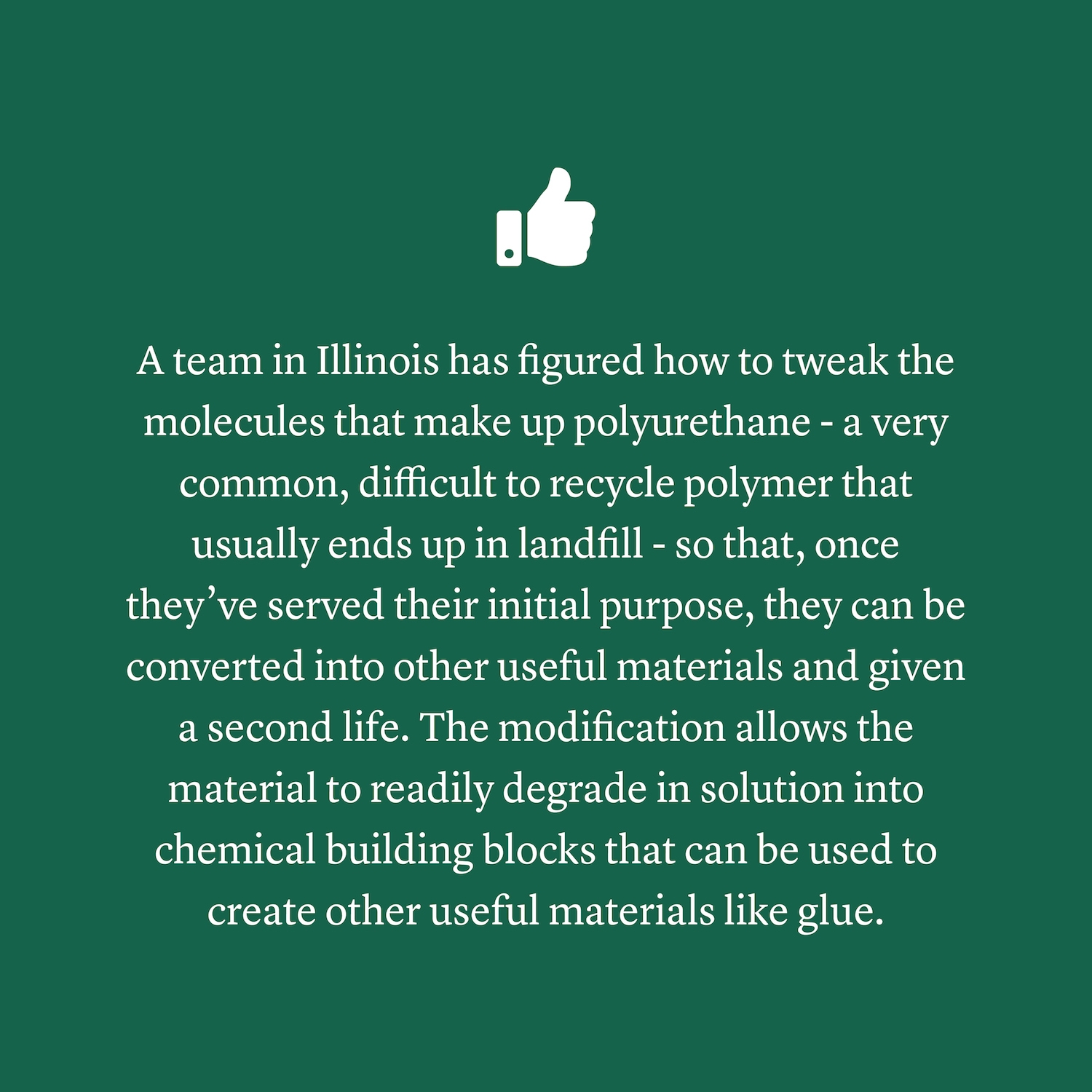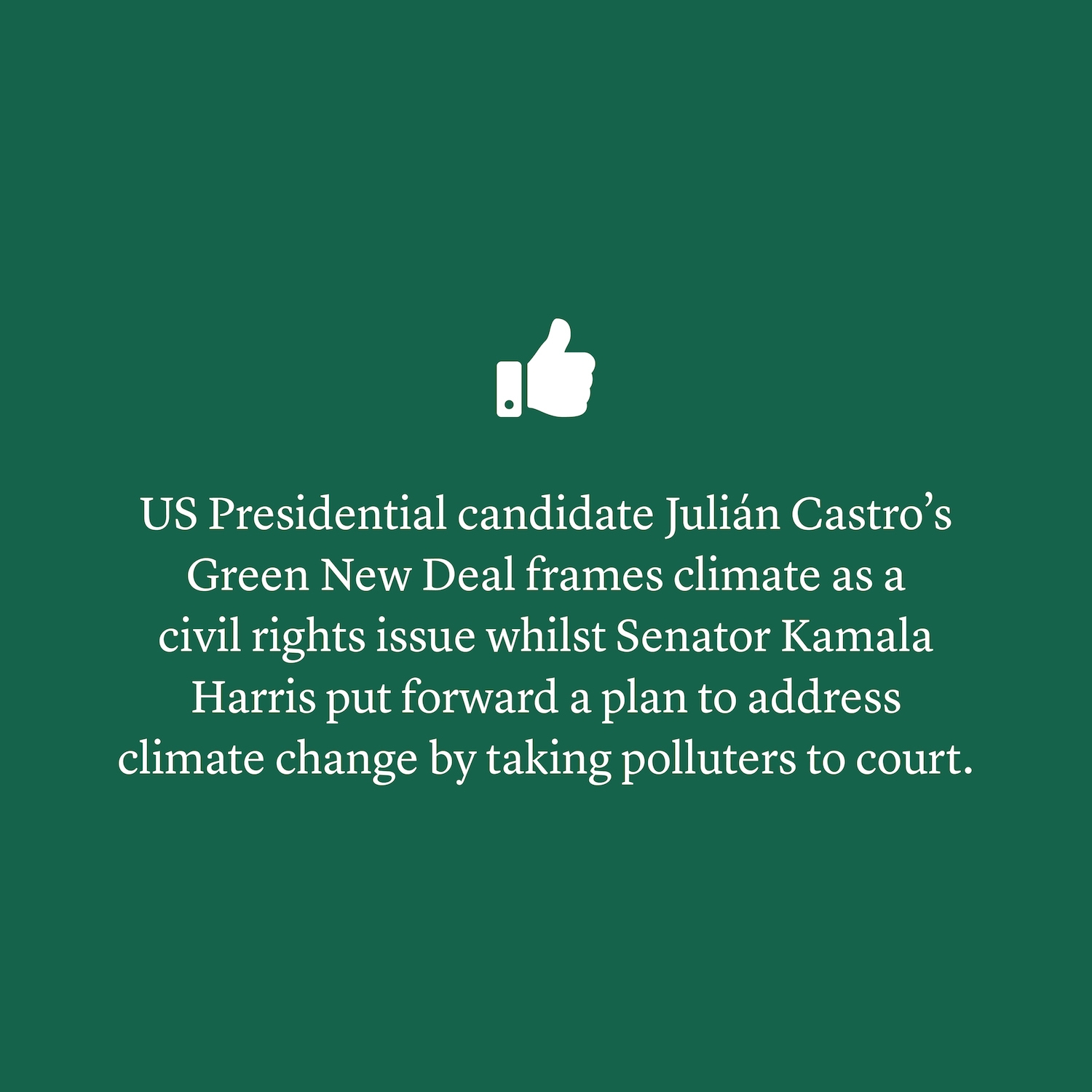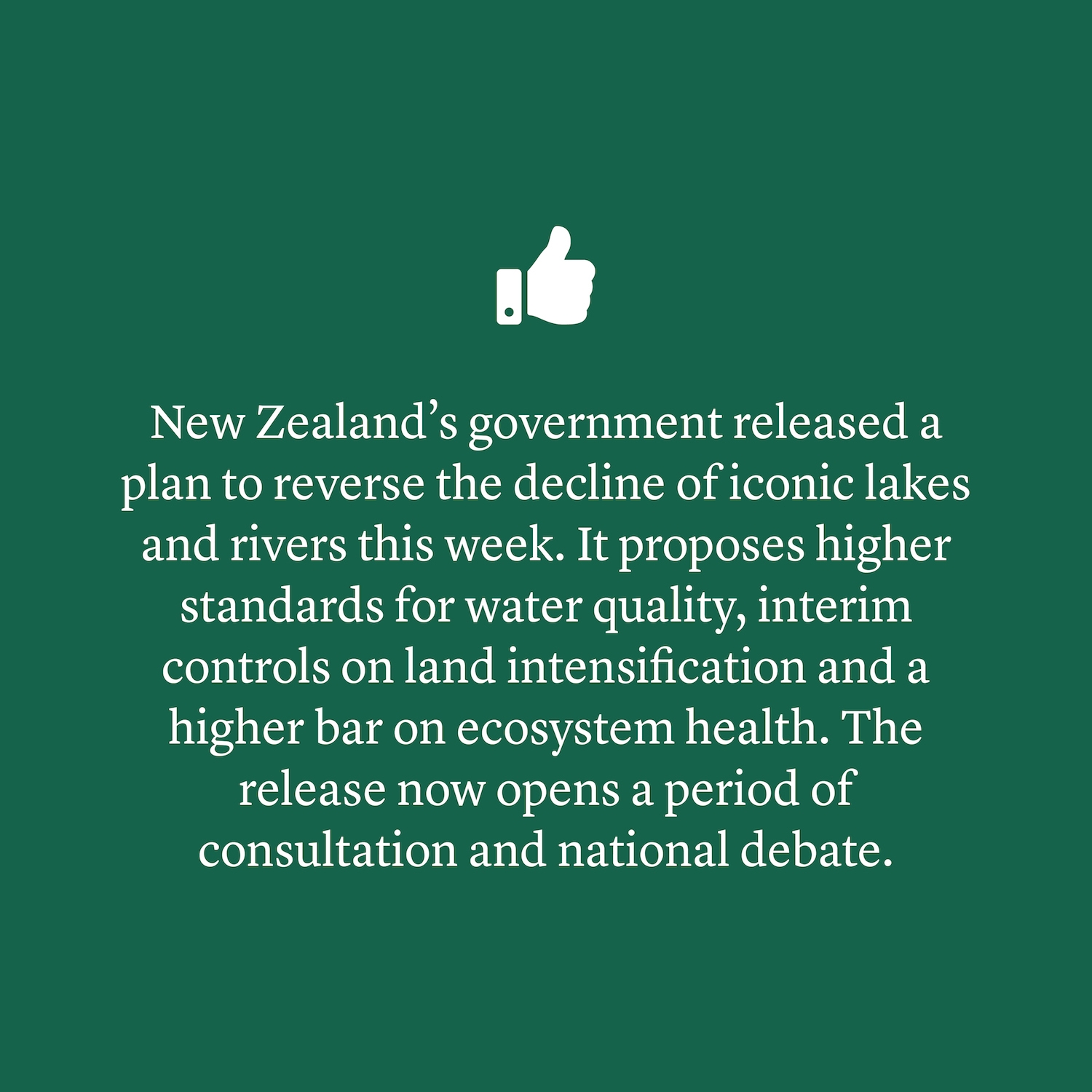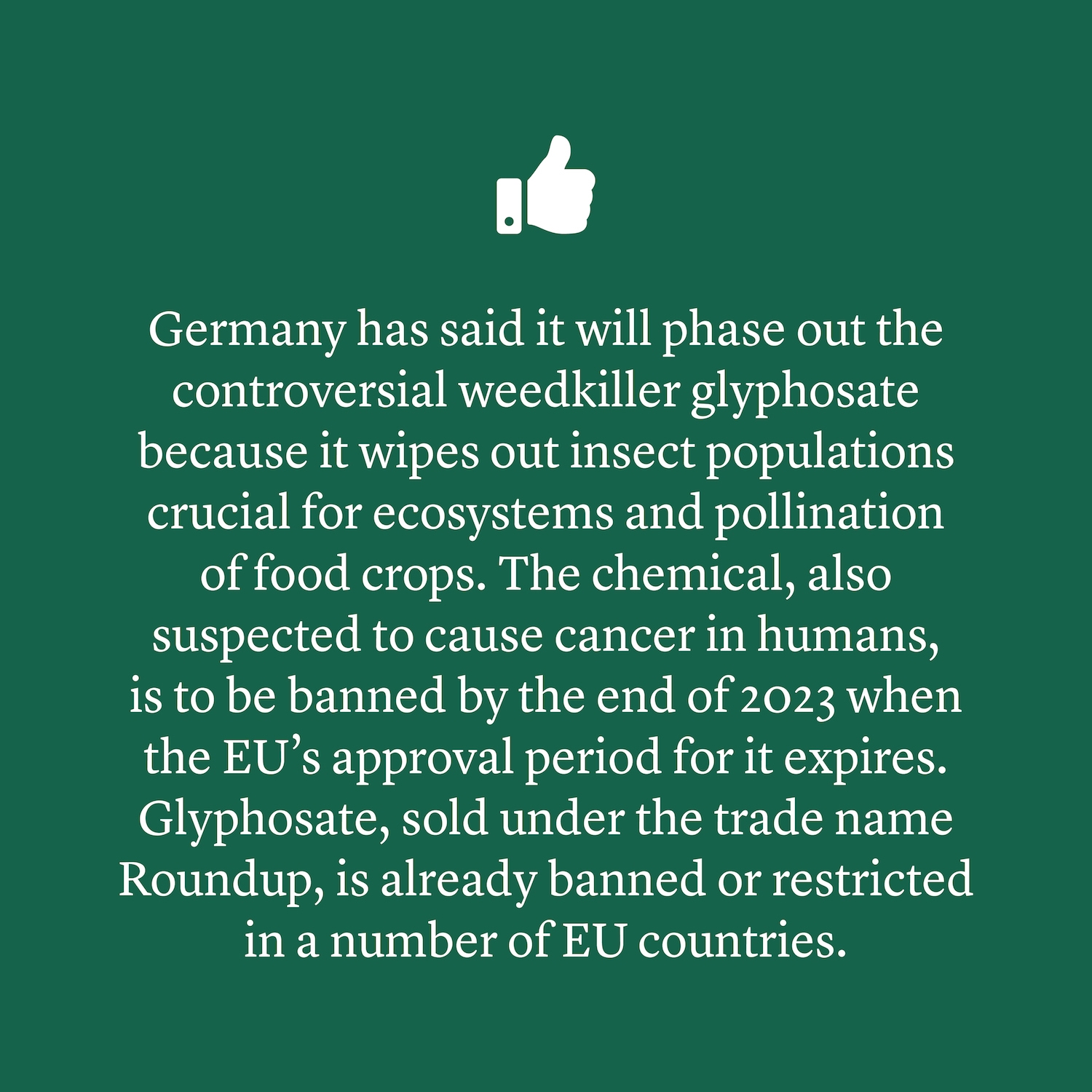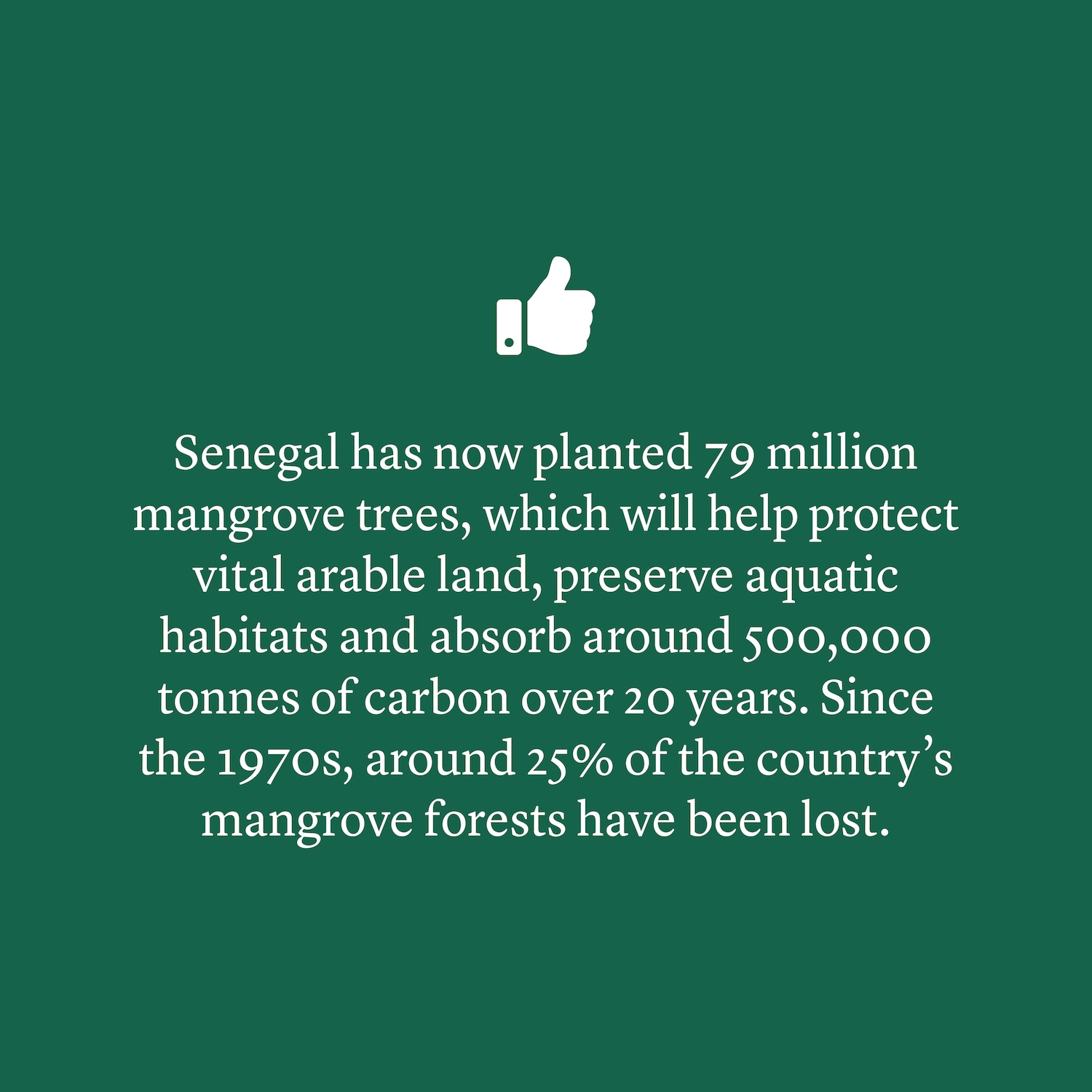Every week we do a major roundup of environmental news across the world. It is really important we all know it and share it, but it can also be pretty disheartening. The bad news is nearly always on a much, much larger scale than the good. The next few years are probably going to look the same as we enter climate feedback loops, profit incentives continue to grow, population increases and we continue to stall on our Paris Agreements. We’re interested in education, understanding systems, and the levers we can all pull for change.
But during this mammoth effort every week, we also get to see lots of little good news stories pass through our initial filter which we’re posting here. We can use these to inspire us, give us ideas in our own communities and potentially scale them up. Environmental good news can often be fairly greenwashed so we’re not interested in that and won’t consider it good news. If you see a story and decide to implement it where you live, we’d absolutely love to hear about it! Please tag us in or email us and let’s create a world of lots of local change which collectively has big impact.
- Drawing on her track record of fighting the fossil fuel industry with the courts, Sen. Kamala Harris put forward a plan to address climate change by taking polluters to court. In a Harris administration, the EPA would get an infusion of funding for enforcement, and the DOJ would also have the resources to take the fight to fossil fuel companies. (Vox)
- Germany has said it will phase out the controversial weedkiller glyphosate because it wipes out insect populations crucial for ecosystems and pollination of food crops. The chemical, also suspected by some experts to cause cancer in humans, is to be banned by the end of 2023 when the EU’s approval period for it expires. Glyphosate, sold under the trade name Roundup, is already banned or restricted in a number of EU countries. (The Guardian / Bloomberg)
- Endangered carnivorous plants like the English sundew (Drosera anglica) are being reintroduced to parts of England in an attempt to reverse their decline. (BBC)
- Acres of underwater seagrass meadows are to be restored off the Welsh coast to tackle climate change. A million seeds of the “wonder plant” have been gathered from existing meadows. Conservationists say it will be the UK’s biggest seagrass restoration – after 92% of it has been lost over the last 100 years. Seagrass takes carbon from the atmosphere up to 35 times faster than tropical rainforests and accounts for 10% of annual ocean carbon storage globally, despite only taking up 0.2% of the seafloor. The disappearance of seagrass is caused by pollution, run-off from the land, coast development and damage from boat propellers and chain moorings. (BBC)
US Presidential candidate Julián Castro’s Green New Deal frames climate as a civil rights issue. By 2050 he also wants 50 percent of US lands and waterways to be under federal protection. Castro wants to use presidential power (along with some new laws) to protect Americans — particularly Americans of color — from environmental discrimination. To address the growing number of climate refugees — there could be as many as 1 billion in the years to come — Castro says he would push Congress to expand the definition of a refugee to someone fleeing their home for reasons related to climate change. (Vox)
- New Zealand’s government released a plan to reverse the decline of iconic lakes and rivers this week. It proposes higher standards for water quality, interim controls on land intensification and a higher bar on ecosystem health. The proposal follows the recent release of Environment Aotearoa 2019, which links agriculture to freshwater degradation. The release now opens a period of consultation and national debate. (The Conversation)
- CNN hosted a seven hour debate on the climate crisis with top Democratic candidates. This would have been unthinkable even earlier this year. The marathon session revealed several unifying themes among the 10 candidates who appeared—and a few key differences. Note: major props to the Sunrise Movement for making this possible. (NYT / Scientific American)
- A team in Illinois has figured how to tweak the molecules that make up polyurethane so that, once they’ve served their initial purpose, they can be converted into other useful materials and given a second life. The modification allows the material to readily degrade in solution into chemical building blocks that can be used to create other useful materials like glue. Polyurethane is hard-to-recycle polymer (resource intensive and expensive) that’s used in a variety of everyday products and usually ends up in landfill or incineration. (Scientific American / IPM)
